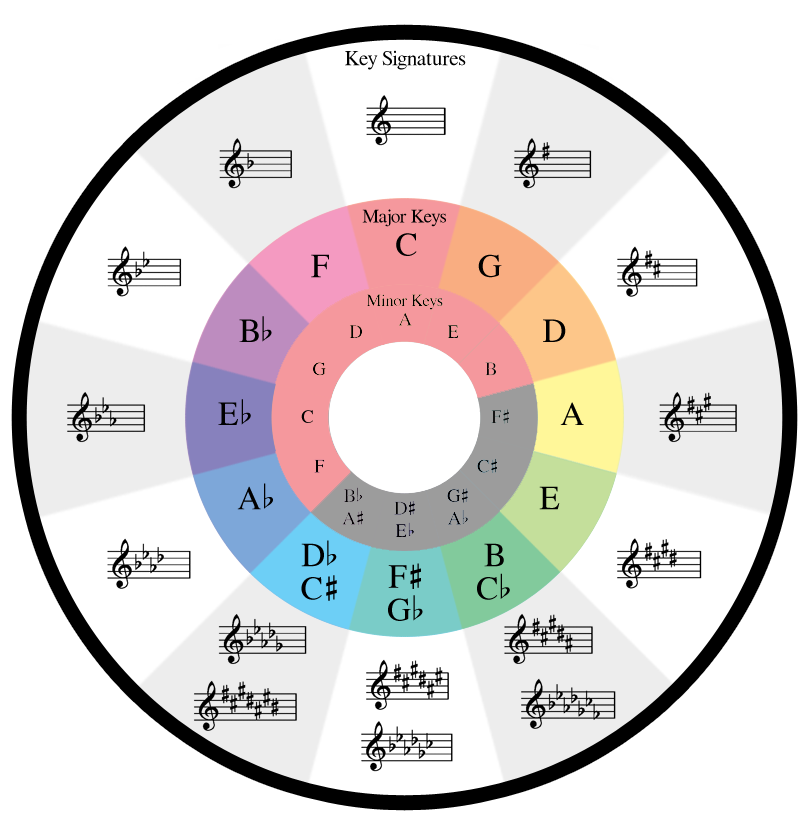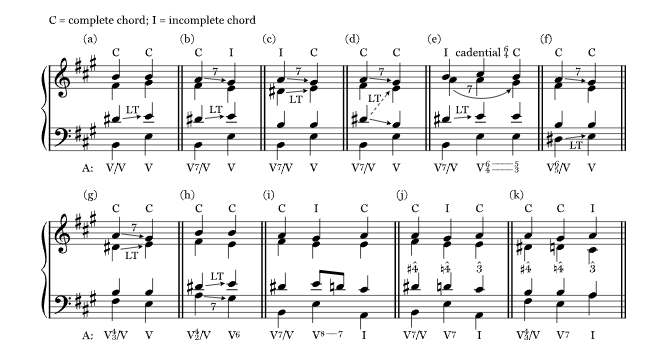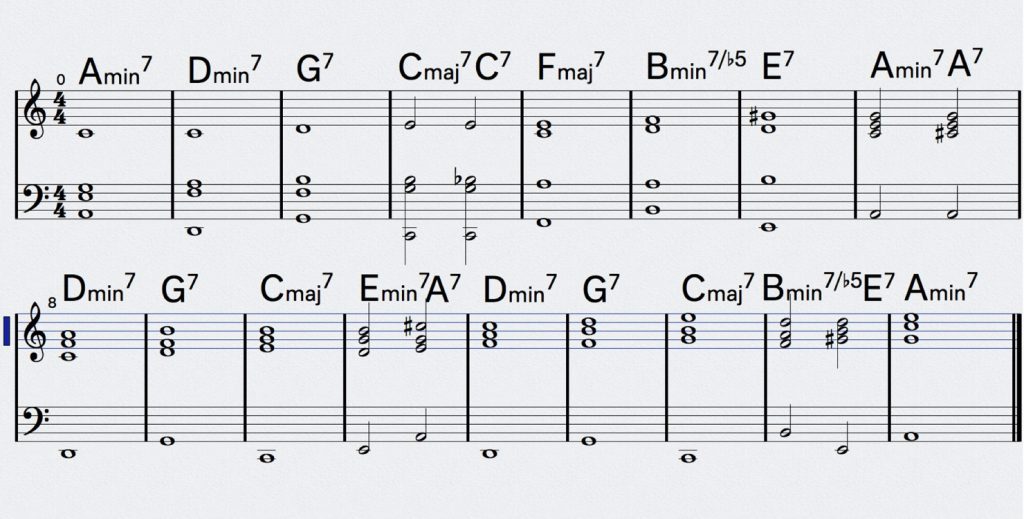Secondary Dominants
The most important scale tones in Western music are the tonic (I or i), subdominant (IV or iv), and dominant (V) – the trifecta upon which most music hinge.
The normal flow of music is tonic, predominant, dominant, and back to the tonic. We can easily see how this pattern could get boring and repetitive. Imagine a world where all music followed this pattern exactly. Exactly! (This is discussed further in my blog post on Triads under Chord Functions.)
The V is powerful because it shares a common tone with the I [the fifth scale degree] and it also contains the leading tone [the 7th scale degree], which makes listeners almost expect a resolution to the I.
Musicians have choices when they compose or improvise and there are common substitutes for the tonic, predominant, and dominant.
In addition to the regular substitutions, secondary dominants are available. Secondary dominants occur when another chord is treated as a dominant and it takes on all the functions of a dominant chord. The tonic cannot be included in this list.
This video from the Music Matters YouTube channel visually explains the concept of secondary dominants.
Professor Christoper Brellochs discusses the power of the V-I progression & tonicization. He breaks down primary vs. secondary dominants and altered chords. He outlined all possible secondary dominants in major and minor keys and showed some interesting relationships between some diatonic chords and the substitute chords.
He also got into the analysis of secondary dominant chords, harmonic progression and secondary dominants, voice-leading and deceptive resolutions, chaining secondary dominants, and realizing figured bass that includes secondary dominants.
Tonicization
Tonicization happens when a composer or performer uses a secondary or applied dominant. Even though tonicization causes you to temporarily change the tonal center the temporary tonic returns to its normal function in the primary key and the original tonal center becomes prominent. It is sometimes referred to as the “key of the moment,” even though the true key of the passage does not really change. Tonicization and secondary dominants can be spotted when an accidental appears in an unexpected place. This is usually a tell-tale sign of tonicization.

Similar to diatonic sequences, secondary dominants rely on the Circle of Fifths heavily.
To find a secondary dominant you first identify the destination chord. For a minute we ignore whether the chord is major or minor and we look at the root note of that chord. Calculate the 5th above the rote note from the destination chord and use the resulting chord to lead there.
Using this formula: In C Major – the dominant is G Major. The resulting secondary dominant is D Major.
Some persons say that you could simply go to the ii or and make it a major chord. However, the pitfall with using that formula boxes you into that system but we can use tonicization on any scale degree so that formula will not always work.
Only major and minor chords may be tonicized. Diminished chords and augmented chords cannot be tonicized because they do not represent stable key areas in Western music.
https://en.wikipedia.org/wiki/Tonicization
Be mindful to not misinterpret the V7/V as a slash chord – this is used in analysis to show the secondary dominant. Another way that V/V is shown is with a bracket that groups the secondary dominant and the dominant.
Secondary dominants resolve just like dominants do. See my post on dominant 7ths for more details.

Example of Tonicization – Fly Me to the Moon
As shown below Fly Me to the Moon features a string of secondary dominant chains broken by V-I movement. How many secondary dominants do you see?

More Youtube Resources
In this video, pianist David Bennet goes over the concept of dominant substations and gives examples of the concept’s use in actual songs. He closes with a composition of his own.
Guitarist Paul Davids provides similar explanation of dominant substitution and its use in popular music form the vantage point of a guitarist.
Dominant Substitution in Practice
To demonstrate dominant substitution I made a short exercise in three keys that arpeggiate between I – IV – V7/V V – I.
